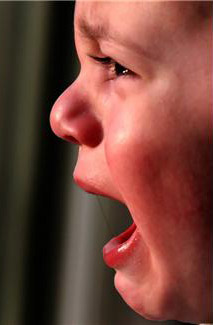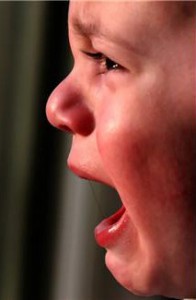
We instinctively cover our ears when we know we are about to hear an extremely loud noise, but what about those loud noises we do not expect?

When I was about 23-years-old I attended a tank firing demonstration at Ft. Hood, Texas with other family members of all ages. The sponsors gave spectators orange ear plugs and I put mine in my ears as instructed. As the tanks fired the noise was truly deafening— it was so loud that the concussion caused my skin and ears to hurt. Babies and children began to cry and scream; it was a fiasco that ended quickly. By the end of five days there was no pain or ringing remaining.
Years later, three-year-old Katie once screamed in the back seat of the car so loudly that my ears rang for two days afterward before stopping. No, she was not sick, hungry or tired, she simply did not want to be in the car and we had no other options.
During a band concert at Katie’s high school the music was so loud that I had to press my palms to my ears to lessen the pain it was causing. It was clear the music teacher was confusing ‘loud’ with ‘good.’ I left the auditorium with pain in both ears and ringing so bad that I was having a difficult time understanding what people said and I had to take pain medication.
After seeing an audiologist I learned that hearing damage is cumulative. Each time you are exposed to a loud noise, you acquire a bit of damage to your hearing, another loud noise; another bit of damage. Before long the damage adds up and may now prevent you from hearing certain voices clearly creating other sounds as it did for me.
Currently there is constant ringing and whistling in both of my ears and I have considerable hearing loss. There are specific tones I do not hear which means I may miss words if not looking directly to the speaker. Sometimes certain people’s voices are almost impossible to understand at all.
Cheated is what I feel like because I did not go to concerts as a teen like most kids, only the one at Katie’s school.
What does this have to do with parenting and children? It has a lot to do with kids but mainly the atmosphere of your home. I’m thinking of noise pollution and how it affects everyone from the tiniest newborn to grandma and grandpa.
In our homes you may find it in a blaring TV, a child’s toy or an appliance but even the sweetest Bach can make you wince if it’s too loud. Noise interrupts thought, can disturb sleep and some say cause cardiovascular and hormonal disturbances. Depending on the type of sound and loudness, it can tear at your nerves.
This noise pollution is in many places in our world but you can control the noise levels in your own home. You can buy quieter appliances and toys. The TV can be left off when nobody is watching. More importantly, you can lower the volume at which you speak to other family members. When we speak softer, they respond more softly.
We buy disposable ear plugs we carry in our pockets for environmental noise: on the highway, at movie theaters, restaurants and many other places. We use earmuffs when we vacuum, use the blender, mow grass and other machines that are loud and damage hearing.
Here are a few examples of noise sources and measurements:
0 dB – Hearing begins
10 dB – Breathing
20 dB – Rustling leaves
30 dB – Whispers
40 dB – Quiet library and refrigerator
50-60 – dB Normal conversation
60 dB – Electric shaver, dishwasher and air conditioner
70 dB – Street traffic, busy restaurant, radio or television
80 dB – Vacuum cleaner, alarm clock, airplane at one mile
85 dB – Power saw, auditorium applause
90 dB – Lawnmower, blender, blow dryer, subway
94 dB – MP3 player at maximum volume
98 dB – Orchestral music
105 dB – Diesel truck, motorcycle
110 dB – Rock concert close up, car horn, crying baby, squeak toy, spectator sports event
120 dB – PAIN BEGINS
130 dB – Ambulance siren, jackhammer
140 dB – Gun firing
120-140 dB – Jet takeoff
150* dB – Tank firing demonstration
160 dB – EARDRUMS RUPTURE
194 dB – Loudest sound possible
*Estimated decibels after reading a document on the physical effects of noise on the human body.
Learn more about noise and hearing damage. Discuss it with your family. Everyone can play an important part in creating a quieter, more pleasant environment.
National Institute on Deafness and Other Communication Disorders
http://www.nidcd.nih.gov/health/hearing/pages/noise.aspx
Decibel (Loudness) Comparison Chart
http://www.gcaudio.com/resources/howtos/loudness.html